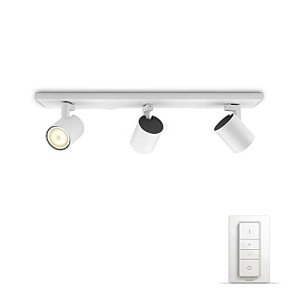A Comprehensive Guide to Buying Kitchen Lighting in the UK
When it comes to kitchen design, lighting plays an essential function in functionality, aesthetic appeals, and general atmosphere. Choosing the ideal kitchen lighting can significantly enhance how you utilize area, affecting everything from meal preparation to amusing guests. With the vast variety of alternatives offered in the UK, it can be intimidating to pick the ideal kitchen lighting. This guide intends to simplify the procedure and offer important insights into the different kinds of kitchen lighting, factors to think about, and suggestions on making notified choices.
Types of Kitchen Lighting
Understanding the various kinds of kitchen lighting is important for attaining a well-lit area. Each category serves an unique function and can be utilized to create a layered lighting effect.
| Kind of Lighting | Description |
|---|---|
| Job Lighting | Provides focused lighting for specific tasks, such as cooking, reading dishes, or washing meals. |
| Ambient Lighting | Offers overall illumination for the whole kitchen, typically through overhead fixtures or ceiling lights. |
| Accent Lighting | Highlights particular features or decorative elements, such as artwork, backsplashes, or architectural details. |
| Decorative Lighting | Adds a stylistic or visual touch, such as pendant lights and chandeliers that function as centerpieces. |
Task Lighting
Task lighting is essential for ensuring safety and performance while preparing meals. Under-cabinet lights, for instance, are a popular option as they light up the countertop without adding shadows, making jobs easier.
Ambient Lighting
Ambient lighting supplies a warm, inviting radiance to the kitchen. This can be accomplished through ceiling-mounted fixtures, recessed lighting, or chandeliers. The key is to guarantee uniform light distribution throughout the space.
Accent Lighting
Accent lighting, utilizing fixtures like wall sconces or LED strip lights, directs attention to specific locations or functions within the kitchen. This kind of lighting can be especially efficient in showcasing lovely backsplashes, cabinet designs, or decorative products.
Decorative Lighting
Decorative lighting includes character and style to a kitchen. Pendant lights above an island or a trendy chandelier can become statement pieces, improving the kitchen's overall design.
Elements to Consider When Buying Kitchen Lighting
Choosing the suitable kitchen lighting includes evaluating numerous essential factors to ensure you make the finest choices for your space.
Layout and Size of the Kitchen
- Understand the measurements of your kitchen and determine essential workspace. The layout will identify how you distribute lighting fixture.
Functionality
- Think about how you use the kitchen. If you frequently prepare or host, choose task lighting. If your kitchen doubles as a dining location, ambient lighting will likewise be crucial.
Design and Aesthetics
- Ensure lighting fixtures match the kitchen's design. Whether modern, traditional, or diverse, the style must harmonize with other elements.
Color Temperature
- Light color considerably affects the ambiance. Warmer tones (2700K-3000K) develop inviting environments, while cooler tones (4000K-5000K) are much better fit for task-oriented areas.
Energy Efficiency
- Think about LED options, as they take in less energy and have a longer lifespan compared to incandescent or halogen bulbs.
Dimming Capability
- Including dimmer switches permits flexibility in adjusting light intensity for different activities.
Tips for Buying Kitchen Lighting
When searching for kitchen lighting, keep the following tips in mind:
- Measure First: Measure the areas where you plan to set up fixtures to ensure they fit well.
- Mix Fixtures: Combine various kinds of lighting for a well balanced technique, mixing task, ambient, and decorative options.
- Think about Placement: Pay attention to the height at which you install fixtures. For UK Lighting Company , pendants must hang 30-36 inches above the surface area.
- Gauge Brightness: Look at lumens instead of watts; brighter doesn't constantly suggest better in regards to functionality.
- Select Quality: Investing in quality fixtures will conserve you money in the long run due to durability and reduced upkeep requirements.
Often Asked Questions (FAQs)
1. What is the very best type of lighting for kitchen tasks?
Job lighting, such as under-cabinet lights or pendant lights over work surface areas, is ideal for kitchen tasks as it supplies concentrated illumination.
2. How do I pick the best size of pendant lights?
A basic general rule is that the size of the pendant should be around one-third the width of the island. If your island is 4 feet wide, search for pendants that are around 12 inches in diameter.
3. Can I use a dimmer switch for all kinds of kitchen lights?
Not all lights are dimmable. Inspect the item specs before installation. LED lights and some fluorescent lights are more likely to require compatible dimmer switches.
4. How can I improve my kitchen lighting without significant restorations?
Think about incorporating plug-in under-cabinet lighting, elegant floor lamps, or battery-operated LED lights to enhance illumination without substantial modifications.
5. Is it needed to work with a professional to install kitchen lighting?
While basic installations can be done independently, it's recommended to hire a certified electrician for complicated setups to guarantee security and functionality.
Choosing the ideal kitchen lighting in the UK involves understanding various lighting types, assessing vital aspects, and carrying out strategic tips. By focusing on the kitchen's design, functionality, and style, property owners can develop a well-lit, inviting space that improves daily activities and celebrations. Whether embarking on a total restoration or a simple lighting upgrade, the ideal options will light up both the kitchen and the cooking experiences shared within it.

